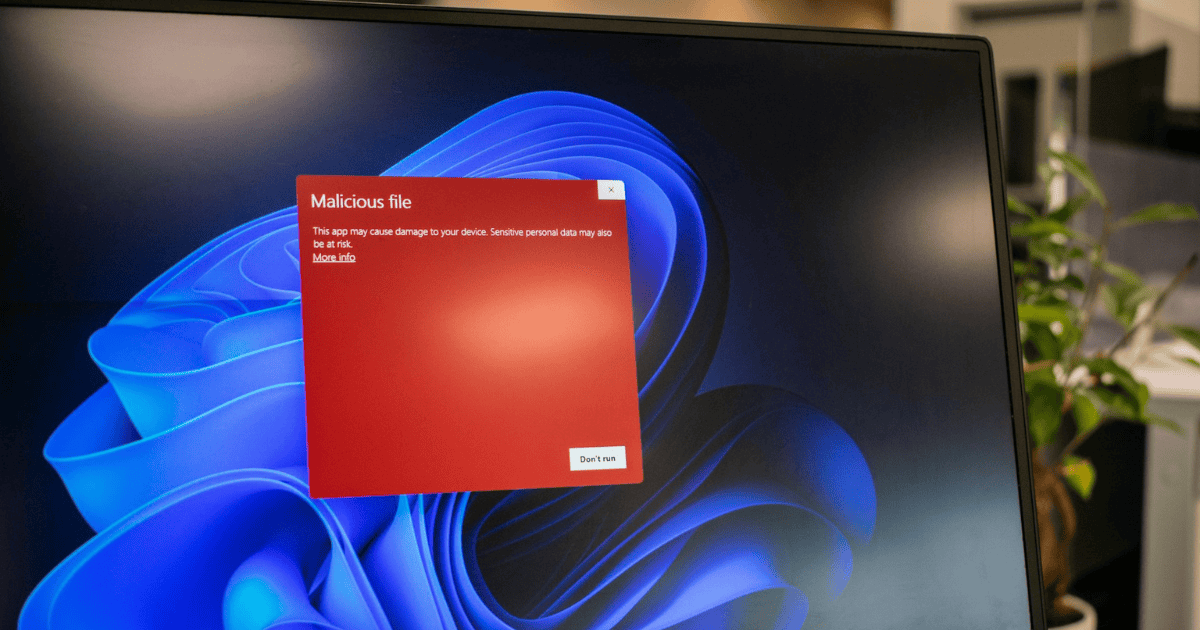Last Updated on 9 February 2024 by Alastair Digby
The threat landscape in the financial services sector continues to get more menacing. Malicious actors and cybercrime groups increasingly set their sights on the sensitive financial data that banks, moneylenders, insurance companies, credit unions, and more all store in their IT environments. Exemplifying the challenge, one recent study found that the financial sector experienced the second-highest volume of data breaches in 2022.
Financial institutions tend to have more mature cyber programs than other sectors in recognition of the sensitivity of the data they store and the regulations that they must comply with to protect this data. So, why is it that this cyber maturity doesn’t seem to translate into solid cyber defence? An increase in profit-motivated cyber attacks is part of the answer, but the complexity of today’s IT environments is arguably the most important factor.
Lacking a continuous, real-time, and regularly updated view of their external attack surface, financial institutions suffer from gaps in protection and vulnerabilities that hackers inevitably find and exploit. This external attack surface represents the sum of Internet-facing assets and the potential paths an intruder can take to gain unauthorized access to your environment.
The complexity of this attack surface stems from the financial services sector’s growing use of cloud infrastructure, the trend toward mobile banking and other financial apps for customers, and the switch to hybrid workforce models.
By effectively managing their external attack surface, financial services companies can improve the protection of their sensitive data assets from modern cyber threats. Get ready to learn how you can fortify your company’s defence against external threats.
Table of Contents
Understanding External Attack Surface Management
There is an information asymmetry between what hackers see in real-time and the snapshot external asset inventories organizations rely on. The rapid pace at which today’s IT environments change renders the traditional method of compiling a static inventory of external attack surface insufficient. Cloud instances that were in use a day or two ago can be rapidly replaced, user access privileges to different services and apps regularly get modified, and misconfigurations can accidentally expose sensitive data at the click of a mouse.
As cyber attackers increasingly employ automated tactics to identify and target organizations, companies are at a disadvantage in defending their most prized assets. External attack surface management (EASM) helps to reduce this information asymmetry by discovering, monitoring, and assessing the risk associated with external facing assets continuously and in real-time.
EASM benefits financial institutions with a centralized and comprehensive view of all their internet-connected assets and their potential exposure to cyber-attacks. A clearer and more accurate picture of your attack surface helps you take steps to minimize the risk of a security breach.
The most important components of external attack surface management are:
- Asset discovery: Identifying and cataloguing all your company’s internet-connected assets, including both on-premises and cloud-based systems.
- Vulnerability assessment: Scanning and evaluating your attack surface to identify potential security vulnerabilities and the risk they pose to the organization.
- Continuous monitoring: Ongoing surveillance of your external attack surface to identify misconfigurations, other risky changes, and potential security breaches in real time.
- Remediation: Insights to help address any identified vulnerabilities and reduce the risk of potential security breaches.
- Reporting: Generating reports to document the results of security assessments and asset inventories.
- Collaboration and communication: Establishing runbooks and other automated workflows for alerting, triaging, sharing threat intelligence, collaborating on remediation efforts, and communicating with key stakeholders about security risks.
- Integration with existing security tools: Integration with existing tool stacks and systems provides a single source of truth for your attack surface and streamlines your security operations
Dedicated EASM solutions can provide the bulk of these components. A truly effective approach also requires strategic changes and input from various stakeholders.
Why is External Attack Surface Management Important for Financial Services?
An accurate outside-in view of your environment is the overarching reason for the importance of EASM in the financial services sector. This perspective fundamentally shifts the advantage from attackers and opportunistic hackers back to your organization, giving you visibility into risks that might otherwise go unnoticed. Here is a deeper dive into EASM’s importance for financial institutions along with some best practices.
Discovering Known and Unknown Digital Assets
The rapid digital transformation and migration to cloud services in the financial services sector have led to a significant expansion of their online presence. As a result, the attack surface of most financial services companies has grown in step with this evolving and increasingly Internet-facing digital ecosystem.
Third-party SaaS and IaaS providers, VPNs for remote workers, marketing partners running temporary campaigns, customer-facing web apps, BYOD endpoints; all of these elements contribute to a constantly expanding attack surface. Discovering and monitoring risks from known assets is more difficult than ever.
On top of that, shadow IT assets get provisioned without the oversight of central IT as employees work from home and become more difficult to monitor. Shadow IT leads to unknown digital assets forming part of your attack surface and potentially paving the way to your sensitive financial data.
Customer-facing mobile and fintech apps play a crucial role in the business models of many financial institutions. The fast-paced development world of DevOps, with its bi-weekly sprints, continuous deployments, and containerization adds to the challenge, as the infrastructures for hosting these apps are in a constant state of flux.
Every one of these factors contributes to the growth of an organization’s attack surface, making it increasingly important to maintain a proactive approach to discovering all known and unknown digital assets. With this visibility you can not only better manage security risks; you can also thoroughly classify and prioritize different assets and apply appropriate security measures based on their importance.
Conducting External Vulnerability Scans
External vulnerability scans are a pivotal part of detecting threats and staying ahead of hackers. These scans probe websites, web applications, APIs, firewalls, and cloud infrastructure from the outside for weaknesses, similar to how malicious hackers probe for vulnerabilities on the Internet.
EASM’s focus on continuous scans is hugely beneficial for the continuous monitoring required of your organization’s ever-changing attack surface. Internet-connected systems and assets are connected all the time, opening them up to the possibility of a cyber attack 24/7. Some best practices to get the most from external vulnerability scans include:
- Ensure you have an accurate inventory of Internet-connected assets so that the scanner can see all relevant systems.
- Whitelist the scanner in any intrusion prevention system (IPS/IDS) or web application firewall (WAF) so that it has access to all systems.
- Make sure your scanner looks for misconfigurations, including outdated SSL/TLS certificates, open cloud storage buckets, and risky containers.
Streamlining Remediation Processes
A concerning recent analysis found that the average time to fix high-severity vulnerabilities grew from 197 days to 246 days. Streamlining remediation processes for all cyber incidents is vital, whether that means patching a vulnerability on time or swiftly detecting and containing an intruder.
The real-time vulnerability data generated by modern EASM solutions makes you aware of the most severe flaws in key infrastructure and applications straight away so that you can prioritize patching. Integration with other tools in your security stack and with your workflows can improve response times to in-progress attacks.
The automation that EASM brings to the table is what really makes the difference to remediation. IBM’s most recent version of its annual cost of a data breach report highlighted how companies with high levels of security automation had average breach costs that were $3.05 million lower than those with no security AI and automation deployed.
One best practice worth remembering with remediation is that you should always validate your fixes. Manually doing this will just add to your workload, so look for solutions in which the level of automation encompasses automated retesting that validates patches and other fixes applied to vulnerabilities and misconfigurations.
Adhering to Regulations and Compliance
Given the sensitivity of financial data and the potential for fraud, it’s no surprise that the finance industry is one of the most heavily regulated from a data privacy and security perspective:
- PCI DSS protects customer credit card information
- GLBA in the United States covers data privacy for customers of financial institutions
- GDPR and the UK equivalent protect the personal data you collect about individuals
The rules of different regulations often overlap. On top of mandatory regulations, many financial institutions also comply with the standards set out in frameworks like ISO/IEC 27001 and NIST.
Regulatory bodies and market authorities are shifting their focus from solely scrutinizing cybersecurity measures to requiring organizations to have a comprehensive understanding and control of their assets, regardless of where they are hosted. Much recent emphasis has been placed on ensuring operational resilience. Being accountable for your assets while also demonstrating the ability to effectively manage and secure them is the way forward.
EASM helps adhere to your regulatory obligations and compliance targets by proactively identifying and managing risks as they arise. You can then take swift action to mitigate violations of regulations, such as unintentional data leaks or insecure web forms collecting customers’ PII.
Improve Your Security Posture with EASM
To recap, all financial institutions have undergone significant recent changes in how they operate from an IT perspective. Increasingly Internet-exposed assets, complex supply chains, and hybrid workforces all pose new security challenges. No other industry experiences such high regulatory scrutiny as the financial services sector. A solid EASM strategy, backed by the right solution, ensures financial institutions decrease their risks while improving security maturity and staying compliant.
The primary concerns that keep CISOs in the financial services sector awake at night are financial data leaks and ransomware attacks that lock down their company’s most critical assets. A lack of visibility into cloud services, supply chains, development environments, endpoint devices, and web servers makes these outcomes more likely. You need to be able to see what attackers can see from the outside.
Informer’s external attack surface management platform addresses these concerns by quickly mapping your external assets, finding vulnerabilities and misconfigurations before attackers do, and accelerating remediation workflows through powerful integrations with Internet-facing cloud services like Google Cloud Platform, AWS, and Azure.





